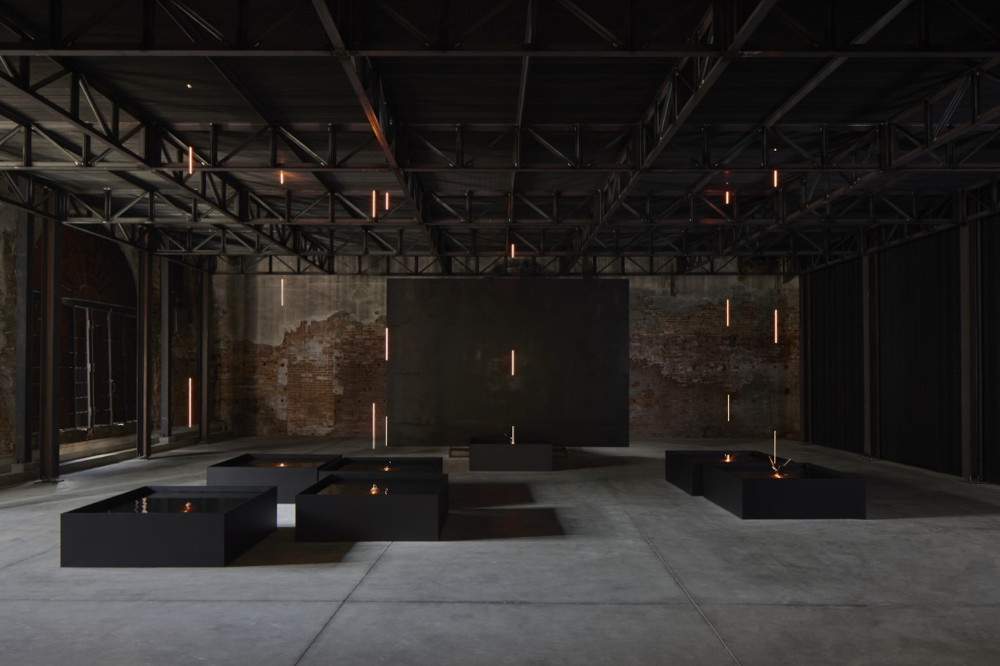The installation entitled Diplomazija Ast uta(Smart Diplomacy) that Arcangelo Sassolino created for the Malta Pavilion at the 59th. International Art Exhibition of the Venice Biennale, which can be visited until November 27, 2022, is a carbon neutral artwork. In fact, a voluntary international standard (ISO 14067:2018) was applied to its realization, and the CO2 equivalent emissions produced during its construction and installation were certified. After identifying how to reduce the impact, the remaining emissions were offset by funding the Ntakata Mountains forest protection project in Tanzania, which combines biodiversity protection with development opportunities and protection of land management rights for local communities. The entire process was supervised and validated by an independent third party.
For the offsetting part, the result was achieved through collaboration with Carbonsink, an Italian company part of the South Pole Group that specializes in developing projects that generate high-quality carbon credits, certified with major international standards.
"Art has the extraordinary ability to bring us closer to nature and convey the value of environmental protection through emotions and suggestion. This is why we are proud to have collaborated on the carbon neutrality of the work," commented Andrea Maggiani, founder and Managing Director of Carbonsink. “In addition to the high symbolic and value value, the steps adopted are exemplary because they are in line with the highest standards of climate action. The same ones we recommend to companies and organizations that want to do their part in addressing climate change: emissions measurement, reduction and offsetting.”
Having at heart the urgency of the climate crisis and aware of the environmental impact of his own work, artist Arcangelo Sassolino worked together with his technical and curatorial team to reduce the climate impact of Diplomazija Astuta as much as possible. With the collaboration of Susanna Sieff, an expert sustainability consultant for large national and international events and companies, actions were identified to preemptively reduce climate-changing gas emissions. These practices include, among others, the use during the seven months of the Venice Biennale of energy from completely renewable sources and the total recovery of steel, which will be melted down and then totally recycled in a nearby production circuit. Residual emissions were then also calculated with the help of Tetis Institute and independently verified by DNV, an international certification body.
Residual emissions were offset with the support of Carbonsink, through the use of certified carbon credits. The credits used to offset the 81 residual tons of CO2e are of the highest quality, generated by the Ntakata Mountains REDD project, launched in May 2017 in Tanganyika district, western Tanzania, with the aim of engaging and supporting local communities̀ in protecting their villages’ forest reserves.
The Ntakata Mountains project was chosen for its proximity to Diplomazija Astuta’s message. By foregrounding the creation of development opportunities and the land management rights of local communities, Ntakata Mountains combines the fight against climate change with efforts to address inequality and social injustice. It contributes to the achievement of 11 out of 17 United Nations Sustainable Development Goals (SDGs). In addition to reducing climate gas emissions from deforestation, the project contributes to local ecosystem conservation by protecting biodiversity and wildlife habitats.
Photo by Agostino Osio, Alto Piano.
 |
| Venice Biennale, it's carbon neutral Sassolino's installation for Malta Pavilion |
Warning: the translation into English of the original Italian article was created using automatic tools. We undertake to review all articles, but we do not guarantee the total absence of inaccuracies in the translation due to the program. You can find the original by clicking on the ITA button. If you find any mistake,please contact us.